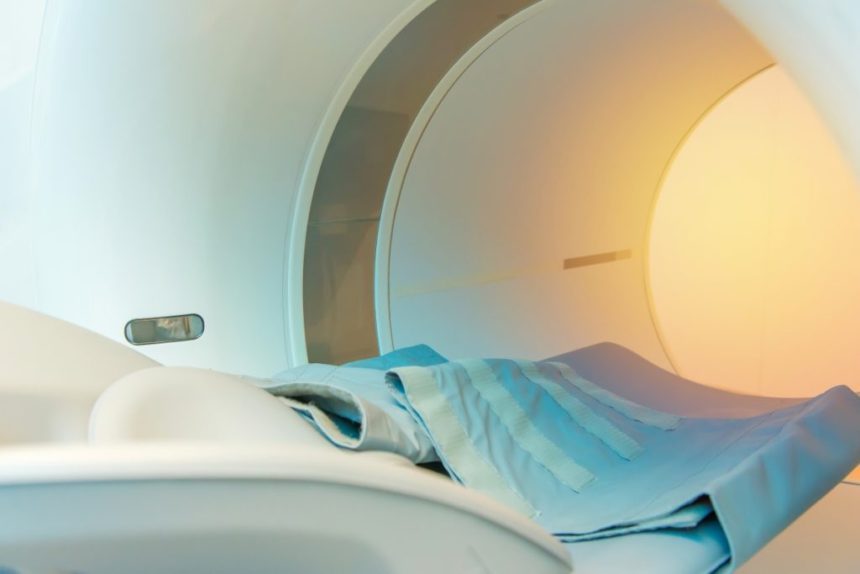This post was originally published on this site
The imaging agent 68Ga-PSMA-11 has better detection rates than 18F-fluciclovine in men with recurrent prostate cancer who have already had radical surgery to remove the prostate and whose levels of prostate-specific antigen (PSA, a marker of disease) are very low, a study says.
The findings of the study, “18F-fluciclovine PET-CT and 68Ga-PSMA-11 PET-CT in patients with early biochemical recurrence after prostatectomy: a prospective, single-centre, single-arm, comparative imaging trial,” were published in The Lancet Oncology.
Whole-body positron emission tomography–computed tomography (PET-CT) scans are necessary to determine the location and extent of disease in men whose prostate cancer has returned, to select the best course of treatment.
However, there is no consensus among different health authorities as to which specific PET-CT imaging agent should be used to identify suspected sites of prostate cancer recurrence in these patients.
Guidelines defined by the National Comprehensive Cancer Network (NCNN) have established that 18F-fluciclovine is the most suitable imaging agent for these cases, while the European Association of Urology (EAU) recommends the use of prostate-specific membrane antigen (PSMA) PET-CT imaging agents.
18F-fluciclovine labels prostate cancer cells by exploiting their increased amino acid (the building blocks of proteins) transport, whereas PSMA PET-CT agents label prostate cancer cells containing high amounts of PSMA, a marker of disease.
“Preliminary reports suggest superior detection rates of PSMA PET-CT compared with 18F-fluciclovine PET-CT. However, these imaging tests have not been compared prospectively and directly,” the investigators stated.
In this study, investigators reported the findings of a clinical trial designed to compare the detection rates of a PSMA PET-CT imaging agent (68Ga-PSMA-11) to those of 18F-fluciclovine in a group of men with recurrent prostate cancer who had already undergone prostatectomy and had very low levels of PSA (less than 2.0 ng/mL).
The prospective, single-center, open-label, single-arm trial (NCT02940262) was carried out at the University of California Los Angeles. All men enrolled in the study had PET-CT scans with both imaging agents within a period of 15 days.
The study’s primary endpoint was to determine the detection rates for both imaging agents on a per-patient and per-region level. Each PET-CT scan was analyzed by three independent experts. The opinion of the majority was considered the correct interpretation of the findings.
Between February 2018 and September 2018, 143 men suspected of having recurrent prostate cancer were screened for eligibility and 50 were enrolled into the trial for a median follow-up period of eight months.
Study findings revealed the PSMA PET-CT imaging agent had significantly higher overall detection rates per patient, compared to those of 18F-fluciclovine (56% vs. 26%). The difference remained significant regardless of PSA levels at the time of the imaging scans.
In addition, on a per-region level, the detection rates of the PSMA PET-CT imaging agent were also higher than those of 18F-fluciclovine on pelvic lymph nodes (30% vs. 8%), lymph nodes in other regions (16% vs. 0%), bone (8% vs. 0%) and other organs (4% vs. 0%).
“However, because the PET findings could not be validated by a gold reference standard in two-thirds of patients, neither sensitivity nor specificity could be established,” the researchers said. “Nevertheless, the results of this prospective head-to-head comparison indicate that PSMA should be the PET tracer of choice when PET-CT imaging is considered for subsequent treatment management decisions in patients with biochemical recurrence and low PSA concentrations.”
They added, “Further research is needed to investigate whether higher detection rates translate into improved oncological outcomes.”
The post PSMA PET-CT Offers Better Detection Rates in Recurrent PC, Study Says appeared first on Prostate Cancer News Today.
The post PSMA PET-CT Offers Better Detection Rates in Recurrent PC, Study Says appeared first on BioNewsFeeds.


